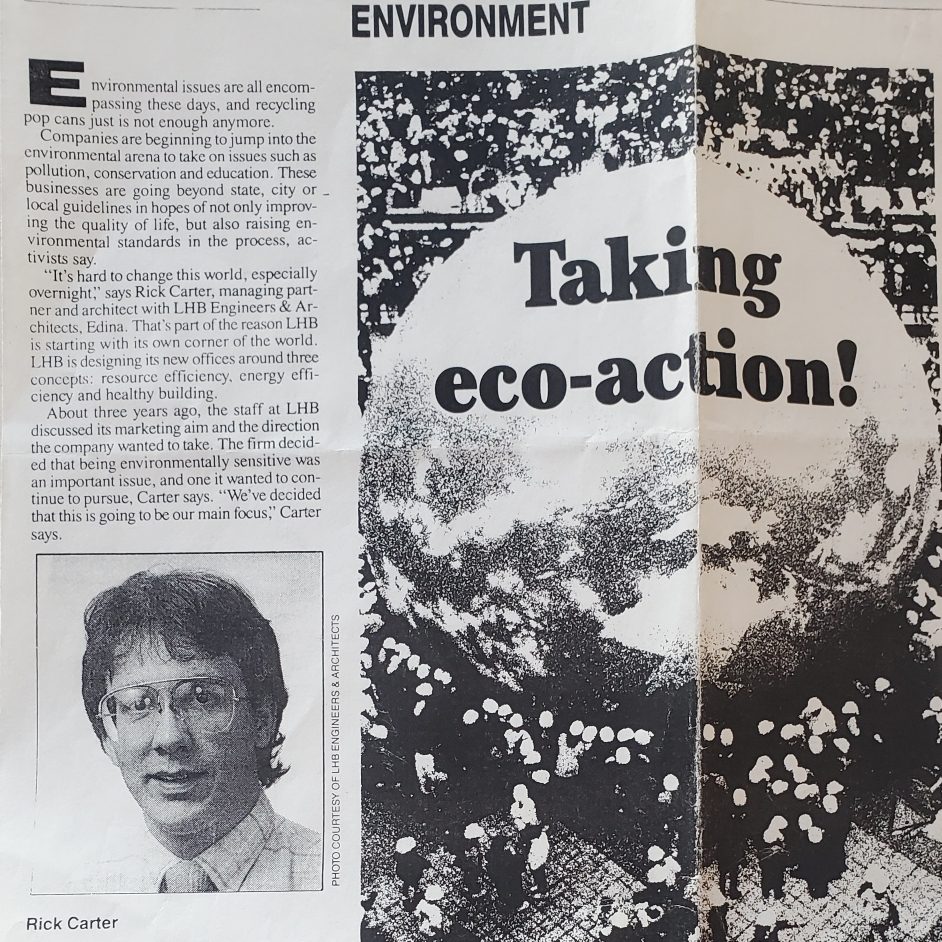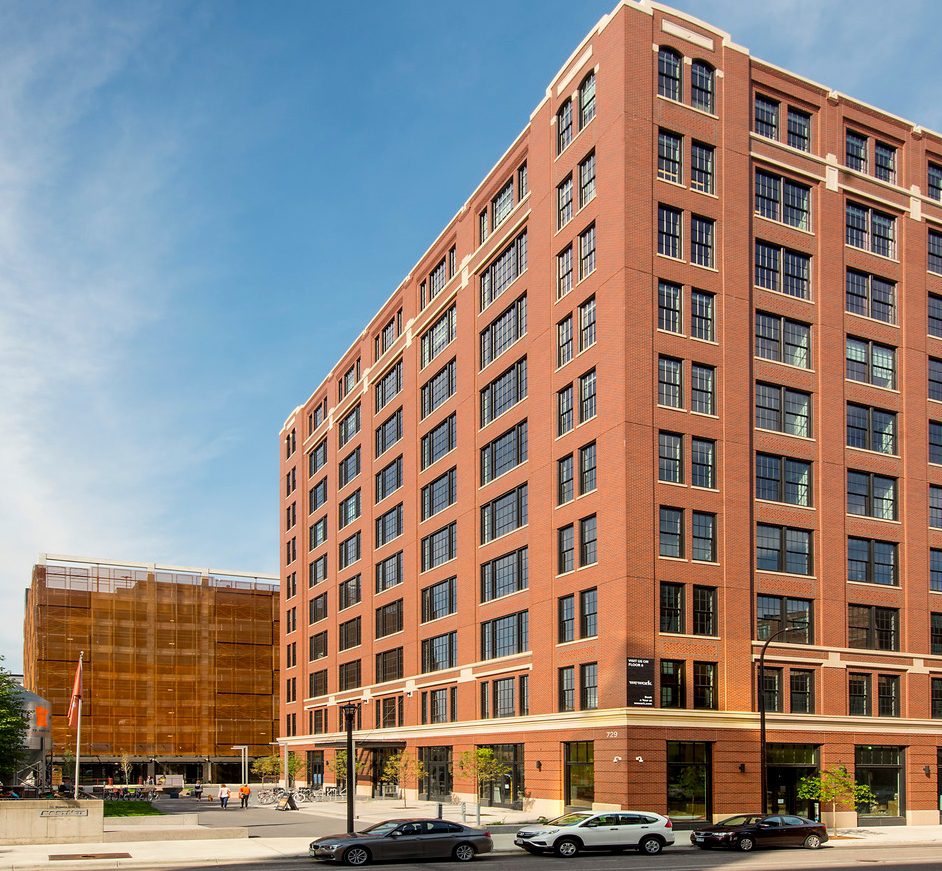
25 years ago, on December 17th, 1991, a group of about seven LHB Edina staff sat down and tried to decide what we would be doing in the future. We had just opened our office two years earlier with two major projects that were winding down and had come to the realization that we needed something, anything, to differentiate us in a world where no one knew who we were.
In a document from this date we say we need to “Identify a special area of expertise and become recognized as experts by selecting an issue that affects clients’ bottom line” and “Become identified as experts in the area of environmental issues affecting buildings and design by researching selected expertise, environmental issues and narrow that focus”.
We began to do research, tell others this is what we did and be hired to do projects because of it. In the next two to three years, we were hired to do a new home for a person with multiple chemical sensitivity, a “healthy” office project, and the Material Re-use Center for the Green Institute, the one and only client to truly challenge us to design more sustainably.
We continued to be hired by clients with a strong interest in what we were calling “Healthy Building Design”. There were literally no other firms in our area who were talking about this. Most of our interaction was with others from around the country or in other fields. I attended the second annual USGBC conference in 1995 with about 75 others. Shortly after that we were hired to design the Phillips Eco-Enterprise Center (PEEC) for the Green Institute, a LEED Pilot Project that to this day is one of the best performing buildings in Minnesota.

In addition to integrating sustainable/high performance design into our projects, we became involved in research and policy development work, like our role in developing the Hennepin County Sustainable Building Guidelines in 1995, before LEED. This then led to our role managing the State of Minnesota’s B3 Sustainable Building Guidelines. One of our earliest research projects was to integrate sustainable design into the architecture program curriculum at the University of Minnesota. This was a precursor to the current Masters of Science in Sustainable Design program.
We also started to measure actual energy and water data for all of our buildings in about 2008. This caused us to focus our research efforts on performance data collection and analysis. We began to be involved in projects studying building energy use, like SB 2030, the MnSCU Energy/Water portal, plug load research and actually creating the Regional Indicators Initiative (RII), measuring community-wide environmental metrics for the entire state.
Today, we have an entire team that focuses on performance research, design, and evaluation services, and integrating this knowledge into our design projects. This group has an annual marketing plan and we meet monthly to advance our goals by promoting these services to our clients. What we will be doing next is to project out 25 years into the future in order to determine our Vision, then make sure we can repeat history.

